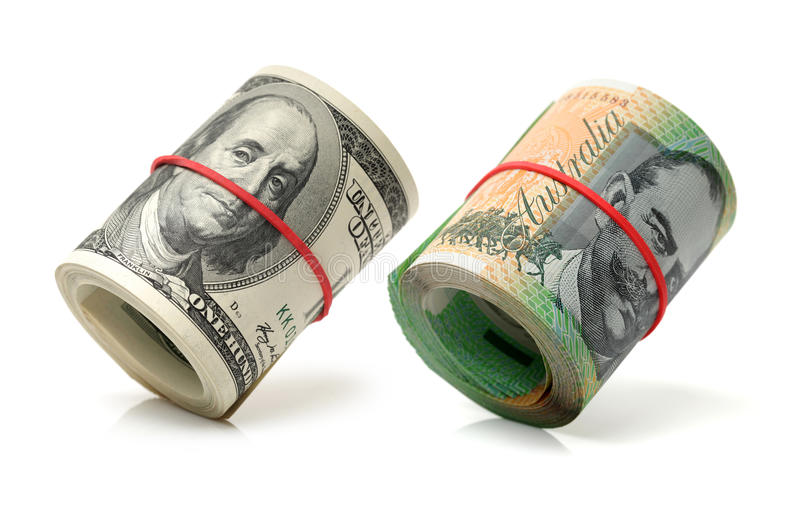The Australian Dollar (AUD) remained under pressure in Asian trading on Tuesday, hovering around the 0.6520 level after falling for three consecutive sessions. Despite a relatively stable risk environment, the Aussie struggled to mount a recovery as traders turned their focus toward global trade developments and upcoming economic data from both Australia and the United States.
The subdued performance reflects a cautious stance among investors ahead of crucial economic releases from Australia and renewed trade negotiations between the United States and China. Meanwhile, optimism over a recently announced US-European Union trade deal has provided fresh support to the US Dollar (USD), limiting any near-term upside for the AUDUSD pair.
US-EU Trade Deal Adds Tailwind to US Dollar Strength
The strength in the US Dollar primarily driven by renewed confidence stemming from the US-EU trade agreement announced over the weekend. The deal imposes 15% tariffs on most European goods, marking a significant shift in transatlantic trade dynamics. Markets welcomed the end of months-long trade hostilities, viewing the pact as a step toward greater economic certainty for multinational firms and exporters.
According to Bloomberg, the agreement will take effect on August 1, and includes provisions for increased cooperation on industrial standards and green technologies. For currency markets, the development represents a supportive factor for the USD, particularly as the greenback benefits from its safe-haven appeal amid lingering global uncertainties.
The US Dollar Index (DXY) rose to a multi-day high following the announcement, capping any gains for risk-sensitive currencies like the Australian Dollar.
US-China Trade Talks Resume Amid Tight Deadlines
While the US-EU deal offered near-term optimism, market participants are turning their attention to another major front in global trade the US-China trade negotiations. Talks are set to resume on Tuesday after high-level discussions were held for over five hours in Stockholm on Monday.
US Treasury Secretary Scott Bessent met with China’s Vice Premier He Lifeng at Sweden’s government offices to continue deliberations over a possible resolution of the prolonged tariff standoff. With a looming August 12 deadline to finalize a comprehensive tariff agreement, the talks carry significant weight for global markets.
Preliminary understandings were reached in May and June, which eased trade tensions and supported global risk sentiment. However, a failure to make further progress could reignite fears of an escalation in tariffs a scenario that would likely hurt trade-dependent currencies like the Australian Dollar more than the USD.
Federal Reserve Policy in Focus Ahead of July Meeting
The Federal Reserve’s upcoming policy meeting is another critical factor shaping the forex landscape this week. The central bank is widely expected to maintain its benchmark interest rate within the 4.25%–4.50% range, but all eyes will be on the FOMC press conference for signals on future policy direction.
Recent remarks from Fed officials have reinforced a cautious stance, indicating a willingness to wait for more evidence of inflation progress before initiating rate cuts. Markets are currently pricing in a strong probability that the first rate cut could occur as early as September, depending on upcoming inflation and labor market data.
For the AUDUSD pair, the Fed’s decision and tone will play a crucial role. A dovish shift could weaken the USD and lift the Aussie, while a more hawkish or data-dependent approach would reinforce current USD strength.
RBA Maintains Watchful Eye on Domestic Data
On the domestic front, the Reserve Bank of Australia (RBA) remains on hold for now but is closely monitoring key economic indicators that could influence its policy stance in the coming months. The central bank’s next steps will likely hinge on the June labor force report and second-quarter inflation (CPI) data, both due later this week.
Recent statements from RBA officials have struck a balanced tone, acknowledging the sticky nature of services inflation and soft labor market conditions. Analysts anticipate that any downside surprise in CPI could tilt the RBA toward a rate cut as soon as the next policy meeting, though the board is expected to remain cautious in its communication.
Australia’s monthly CPI indicator has shown signs of cooling inflation pressures, but second-quarter data will provide a more comprehensive view of price dynamics. The labor force report, especially trends in unemployment and wage growth, will also be key in shaping monetary policy expectations.
Australian Dollar Faces External and Domestic Headwinds
The Australian Dollar finds itself at a crossroads, caught between external macroeconomic drivers and domestic economic uncertainties. While the AUD typically benefits from risk-on sentiment and commodity strength, it is currently facing a convergence of factors that are limiting its upside:
US Dollar strength on improved trade sentiment and Fed expectations
Renewed concerns over global trade relations, particularly US-China ties
Cautious RBA stance awaiting inflation and labor market confirmation
Weak commodity prices, including iron ore and copper, amid China slowdown worries
The currency’s recent declines reflect a broader reassessment of Australia’s growth outlook and the possibility of monetary easing later this year.
Technical Outlook: AUDUSD Struggles Below Resistance
From a technical perspective, AUDUSD continues to trade within a bearish short-term structure, with immediate resistance seen around the 0.6560–0.6580 area. This zone coincides with the 50-day moving average and prior swing highs.
On the downside, support lies at 0.6500, a key psychological level, followed by 0.6465, which marks the July low. A break below this region could accelerate downside momentum, especially if upcoming economic data disappoints.
Momentum indicators such as the Relative Strength Index (RSI) remain in neutral territory, offering no clear signals of reversal. Traders are likely to remain on the sidelines ahead of the Fed meeting and Australian CPI data releases later this week.
Market Outlook: Key Events to Watch This Week
With a loaded calendar ahead, market participants will closely monitor the following developments:
Tuesday, July 30: Resumption of US-China trade talks in Stockholm
Wednesday, July 31: Release of Australia’s monthly and quarterly CPI
Thursday, August 1: RBA Governor’s speech and US Initial Jobless Claims
Friday, August 2: Australia’s June labor force data
Late Week: US Non-Farm Payrolls preview and final Fed commentary pre-September
All these events carry significant potential to influence the AUDUSD pair through shifts in interest rate expectations and risk sentiment.
Conclusion: Australian Dollar on the Defensive Ahead of Key Data
The Australian Dollar remains under pressure as the US Dollar finds fresh support from improving trade sentiment and Fed policy stability. With the AUDUSD pair hovering near multi-week lows, the next leg will likely be dictated by upcoming inflation and labor data from Australia and the outcome of ongoing US-China trade negotiations.
Unless Australian data surprises to the upside or global risk appetite improves significantly, the AUD may continue to underperform its peers, particularly in the face of strong US economic data and Fed resilience.
Disclaimer: This blog is for informational purposes only and does not constitute financial advice. Always conduct your own research and consult a professional advisor before making investment decisions.
[sc_fs_multi_faq headline-0=”h2″ question-0=”Why is the Australian Dollar weak right now?” answer-0=”The AUD is weak due to strength in the US Dollar from a new US-EU trade deal, cautious Fed commentary, and uncertainty surrounding the RBA’s rate outlook. Traders are also awaiting key Australian CPI and labor data.” image-0=”” headline-1=”h2″ question-1=”What is the impact of the US-EU trade deal on AUD/USD?” answer-1=”The US-EU trade agreement strengthens the US Dollar by improving trade certainty and reducing geopolitical risks. This weighs on the AUD/USD pair, especially as the Australian Dollar is sensitive to global trade dynamics.” image-1=”” headline-2=”h2″ question-2=”Will the RBA cut interest rates soon?” answer-2=”The RBA is currently on hold but may consider a rate cut if inflation continues to fall and labor market conditions soften. The upcoming CPI and employment reports will be key in shaping this outlook.” image-2=”” count=”3″ html=”true” css_class=””]









